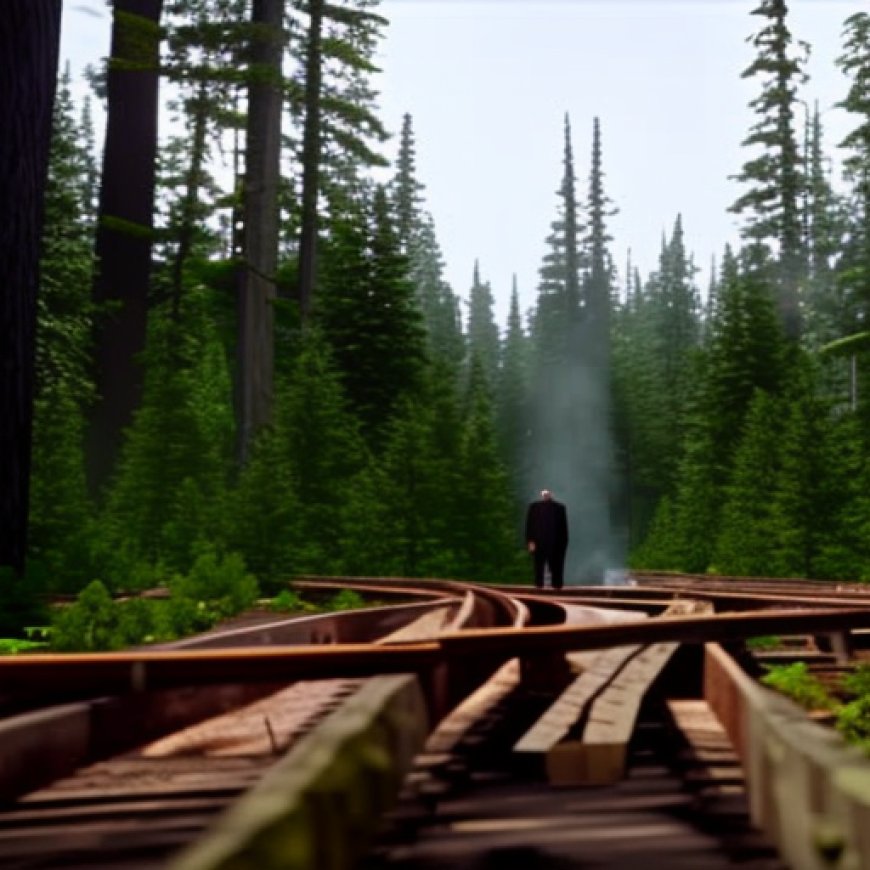Biden moves to ban most old-growth logging in national forests
Biden moves to ban most old-growth logging in national forests The Washington Post


The Biden Administration Proposes New Protections for Ancient Trees in National Forests

The Proposal
The Biden administration will announce a proposal on Tuesday to provide new protections for the most ancient trees in America’s national forests. The proposal aims to ban most logging in groves that play a vital role in fighting climate change.
Significance of the Proposal
The proposal is in line with the Sustainable Development Goals (SDGs), particularly Goal 13: Climate Action. It seeks to prevent the cutting down of old-growth trees for economic reasons, as these forests store vast amounts of carbon and provide essential habitats for wildlife. By protecting these trees, the proposal aims to address the challenges of wildfires, disease, and pests, while also preserving the cultural and heritage values associated with the forests.
Scope of the Proposal
The proposal includes the simultaneous revision of all 128 forest plans by the U.S. Forest Service, which manages 193 million acres of forests and grasslands. It aims to protect the nearly 25 million acres of old growth overseen by the Forest Service, 45 percent of which is currently not protected from logging.
Monitoring and Tracking Efforts
The proposal also requires the Forest Service to monitor changes in old growth across the country and track its efforts to protect it. This monitoring and tracking will help assess the effectiveness of the proposed measures and ensure their implementation aligns with the SDGs.
Executive Order and Findings
The announcement stems from an executive order signed by President Biden a year and a half ago, directing the inventory and protection of mature and old-growth forests. The findings revealed that more than 32 million acres of old-growth forests remain on public lands in the United States, representing about 18 percent of all forested land managed by the Forest Service and Bureau of Land Management.
Concerns and Future Considerations
While environmentalists are likely to be pleased with the proposal, some concerns remain. Permanent safeguards for mature trees, which could eventually become old growth, were not included in the proposal. However, the possibility of future protections for these trees is not ruled out. The timber industry has expressed opposition to the proposal, citing job creation and fire danger reduction as reasons to continue logging. Additionally, the finalization of the language about protecting old growth is dependent on the completion of an environmental impact statement by early 2025.
Conclusion
While there are concerns about the longevity of the proposed protections, the Biden administration’s efforts to protect ancient trees in national forests align with the SDGs and demonstrate a shift in the Forest Service’s approach. The proposal acknowledges the importance of preserving old-growth forests for climate action and biodiversity conservation.
SDGs, Targets, and Indicators Analysis
1. Which SDGs are addressed or connected to the issues highlighted in the article?
- SDG 13: Climate Action
- SDG 15: Life on Land
The article discusses the proposal by the Biden administration to ban most logging in old-growth forests, which play a vital role in fighting climate change. This aligns with SDG 13, which focuses on taking urgent action to combat climate change and its impacts. Additionally, the protection of old-growth forests is related to SDG 15, which aims to sustainably manage forests, combat desertification, halt biodiversity loss, and protect and restore ecosystems.
2. What specific targets under those SDGs can be identified based on the article’s content?
- SDG 13.2: Integrate climate change measures into national policies, strategies, and planning.
- SDG 15.2: Promote the implementation of sustainable management of all types of forests.
The article highlights the proposal to revise forest plans and prohibit cutting down old-growth trees for economic reasons. This aligns with SDG 13.2, as it involves integrating climate change measures into national forest management policies and strategies. Furthermore, the protection of old-growth forests supports SDG 15.2, which aims to promote sustainable management of all types of forests.
3. Are there any indicators mentioned or implied in the article that can be used to measure progress towards the identified targets?
- Indicator for SDG 13.2: Number of forest plans revised to include measures for protecting old-growth trees and combating climate change.
- Indicator for SDG 15.2: Percentage of old-growth forests protected from logging.
The article mentions that the proposal includes revising all 128 forest plans of the U.S. Forest Service to protect old-growth trees. The number of revised forest plans can serve as an indicator for measuring progress towards integrating climate change measures into national forest policies (SDG 13.2). Additionally, the article states that the plan would prohibit cutting down old-growth trees for economic reasons, indicating a potential indicator for measuring the percentage of old-growth forests protected from logging (SDG 15.2).
Table: SDGs, Targets, and Indicators
| SDGs | Targets | Indicators |
|---|---|---|
| SDG 13: Climate Action | 13.2: Integrate climate change measures into national policies, strategies, and planning. | Number of forest plans revised to include measures for protecting old-growth trees and combating climate change. |
| SDG 15: Life on Land | 15.2: Promote the implementation of sustainable management of all types of forests. | Percentage of old-growth forests protected from logging. |
Behold! This splendid article springs forth from the wellspring of knowledge, shaped by a wondrous proprietary AI technology that delved into a vast ocean of data, illuminating the path towards the Sustainable Development Goals. Remember that all rights are reserved by SDG Investors LLC, empowering us to champion progress together.
Source: washingtonpost.com

Join us, as fellow seekers of change, on a transformative journey at https://sdgtalks.ai/welcome, where you can become a member and actively contribute to shaping a brighter future.







